NorthBay biz celebrates its 40th anniversary with a look at how health care in the region has changed over the years.
Health care in the United States has changed dramatically. Fifty years ago, the hospital experience included lengthy stays; treatments for cancer, heart disease and stroke were limited; it was routine for patients and staff to light up cigarettes on hospital grounds; and, if you were a married woman with cancer, there was a good chance you wouldn’t be informed of your diagnosis, though your husband likely would be. Prevention strategies weren’t part of the vocabulary.

“We didn’t understand what caused diseases such as cancer and heart disease,” says Joel Sklar, M.D., chief medical officer at Marin General Hospital in Greenbrae. “Back then, we were passing out cigarettes to soldiers in foxholes. It took a generation to change that habit. Since then, we’ve learned that diet, exercise and stress management can prevent disease. Now we’re aware how life expectancy is impacted by lifestyle.”
There have also been major changes in dental care following the emergence of Acquired Immune Deficiency Syndrome (AIDS), as well as the advent of dental implants and tooth-colored composites.
In recent decades, there have been stunning innovations in health care, and prevention strategies have become key to overall health. Here’s how health care has changed in the North Bay over the years.
50+ years of service
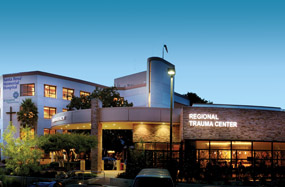 Santa Rosa Memorial is celebrating 65 years of caring this year. On January 1, 1950, Sister Rita Rudolph officially opened its doors. The hospital was a 90-bed facility, staffed by 10 sisters, 93 employees and a medical staff of 70 physicians and surgeons. On that first day, 12 patients were admitted to the hospital and three babies were born.
Santa Rosa Memorial is celebrating 65 years of caring this year. On January 1, 1950, Sister Rita Rudolph officially opened its doors. The hospital was a 90-bed facility, staffed by 10 sisters, 93 employees and a medical staff of 70 physicians and surgeons. On that first day, 12 patients were admitted to the hospital and three babies were born.The hospital was founded to fulfill a need for health care, post World War II. Community leaders invited the Sisters of St. Joseph of Orange to come to Santa Rosa. A fund-raising campaign to build the hospital was launched in 1947, and the citizens of Sonoma County rallied together to make it happen. “From its inception, the establishment of the hospital—and all of our services that followed—arose out of a community need and vision,” says Katy Hillenmeyer, communications and marketing director of St. Joseph Health in Sonoma County. At the time, The Press Democrat reported that “bars and liquor stores, beauty parlors, cafes, hotels, men, women, boys and girls—everybody was eager to contribute his bit” toward raising the needed funds.
Ultimately, donors raised more than $355,000, and the balance of the building’s estimated cost ($1.8 million) was financed by the sisters. (A 90-bed hospital built today would roughly cost $270 million.) The hospital was named to honor local men and women who served and died during World War II.
Today, Memorial is St. Joseph Health’s flagship Sonoma County hospital and the largest hospital in the North Bay, with 278 beds. In 2000, it became the region’s designated Level II Trauma Center, equipped to care for the most critically injured and ill patients. Last, year, patient care was expanded in the emergency department to a 26-bed facility. Memorial’s Heart and Vascular Institute is among the region’s leading providers of care to patients suffering from the most deadly form of heart attack, known as a STEMI (an acronym for ST segment elevation myocardial infarction).
Marin General Hospital (MGH) has been providing care in Marin County since 1952. Its Marin Cancer Institute, launched in the early ’80s, is recognized as one of the premier facilities for cancer care in California.
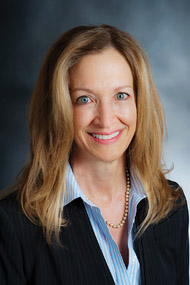
How has cancer care changed over the years? “While cancer is still frightening, people realize it’s far more curable today than in the past and that every cancer patient has a reason for hope,” says Francine Halberg, M.D. “I used to see women who thought that having breast cancer was automatically a death sentence. Now, if caught early, the cure rate is generally excellent and the risk of recurrence often is very low. This is a golden era for oncology research, with major breakthroughs that promise better, more tailored cures.”
There’s also a stronger emphasis today on prevention. “Any woman who gets a mammogram fills out a questionnaire that we use to calculate her risk,” says Halberg. “Then we discuss preventive steps ranging from better nutrition to stress management, weight loss and exercise.”
The hospital has also made great strides in cardiac services. In 1975, its heart unit consisted of only four beds, but its cardiac services grew steadily in the decades that followed. In 1977, David Sperling, M.D., a cardiologist at the hospital, introduced a formal rehabilitation program for patients, which led to the Total Atherosclerosis Management (TAM) Program by Mark Wexman, M.D., 10 years later. (The TAM Program consisted of an eight-week schedule for cardiac patients and involved 12 hours of direct physician coaching, individualized nutrition and exercise counseling, and more.)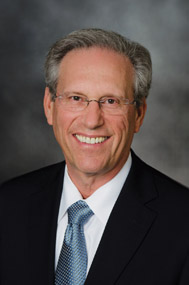

During the ’80s, the MGH cardiology unit evolved rapidly with the development of a catheterization lab, open-heart surgery capabilities and a heart unit that was expanded to 24 beds. Coronary intervention such as angioplasty and stenting (procedures used to open blocked arteries) were introduced in 1990. By 1993, new strategies for the treatment of heart attack patients resulted in two- to three-day hospital stays, compared to one- to two-week stays a few years earlier.
Today, prevention is a big part of cardiology, according to Sperling. “Marin County patients are health conscious and recognize the benefits of proper diet, exercise and weight control.”
The hospital has been ranked by Healthgrades among the top 100 in the nation for its coronary care unit and catheterization lab two years in a row (2014 and 2015). “We’ve been able to achieve superb times in opening up blocked arteries associated with heart attacks,” says Sperling. “Whereas the gold standard across the country is 90 minutes, our average heart attack patient has the artery opened in less than 45 minutes.”
40+ years of service
 In 1972, farm worker Placido Garcia had a question for local Hispanic leaders at a meeting he attended in Napa County: Why didn’t the county offer health care to low-income patients without insurance? His question led to the opening of a new community health center—Clinic Ole—several months later.
In 1972, farm worker Placido Garcia had a question for local Hispanic leaders at a meeting he attended in Napa County: Why didn’t the county offer health care to low-income patients without insurance? His question led to the opening of a new community health center—Clinic Ole—several months later.Clinic Ole’s early days were humble. It operated out of a tiny room above La Luna Market in Rutherford, providing immunizations to children of mostly Hispanic farm workers. Staff members were volunteers from the local medical community.
Today, Clinic Ole continues to provide affordable care and is one of the largest employers in Napa County (with 176 staff members) and operates health centers at eight sites, serving 25,000 patients each year.
“We work with families and the community. We feel it’s our job to keep our community healthy. Our philosophy has remained the same for 42 years,” says Tanir Ami, chief executive officer.
There have been other notable changes over the years. First, there’s been a shift in the demographics of the patients the clinics serve. In the early years, the vast majority of patients (90 percent) were Hispanic. Today, 60 percent of their patient population is Hispanic and 40 percent is Caucasian.
Second, its electronic medical records system (EMR) lets practitioners proactively engage with patients in the interest of preventive care. “We can see now that diabetes is a problem and bring our patients together for classes on how to manage it through exercise and nutrition,” says Ami. “The ability to proactively engage in preventive health—that’s an epic change. As a nation, we’re just on the brink of it. In the next 40 years, we’ll have the ability to maximize [this information] and get ahead of chronic conditions. We’re in the infancy stage.”
Last fall, Clinic Ole announced plans to build a new medical office building, which is expected to cost up to $24 million. The facility will more than double the space the health center currently occupies on Pear Tree Lane.
Marin Community Clinics (MCC) has been providing affordable health care to the uninsured and low-income residents of Marin County since 1972. In the early days, the clinic operated out of church basements and the staff included volunteer physicians and nurses.
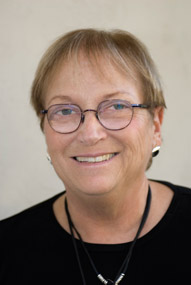
Today, MCC serves about 35,000 patients per year. The clinic employs 300 staff members and operates four clinics, two teen clinics and three dental clinics throughout Marin County. “We have a wonderful staff that’s mission-driven, and that mission is to take care of patients in a caring and competent way. That’s what it’s all about,” says Linda Tavaszi, chief executive officer.
How has health care changed for the clinic in the past 40+ years? “What’s key is the phenomenal growth and development made possible by the changes and improvements in delivery of care by everyone,” says Tavaszi. “The focus on prevention in the last 40 years is a big change. We have approximately 16,000 children and, therefore, we’re heavily invested in wellness and prevention.” To live longer and live better, the clinics promote a healthy diet, regular exercise and early screenings, says Tavaszi.
Recently, MCC and LIFT-Levantate partnered to curb childhood obesity, high blood pressure and diabetes. This collaborative effort provides organic, local food through the food bank every week and provides screenings for diabetes and blood pressure.
30+ years of service
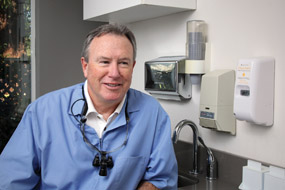 Steven Wilburn, DMD, of Santa Rosa, who’s been practicing dentistry for 32 years, notes three major changes in dentistry during his career.
Steven Wilburn, DMD, of Santa Rosa, who’s been practicing dentistry for 32 years, notes three major changes in dentistry during his career.First, AIDS forced dental care providers to wear protective equipment such as gloves, masks and eye protection. “All employees must wear protective equipment. It’s much more stringent today, and it started with the AIDS epidemic,” says Wilburn.
Second, dentistry has evolved away from amalgams (an alloy of mercury with various metals used for dental fillings) to tooth-colored composites for back-teeth fillings. This change is driven more by public perception of the hazards of mercury than by scientific evidence, says Wilburn, but the cosmetic advantage of tooth-colored composites also makes them popular. “Amalgam is much more rarely used these days,” he adds.
And finally, dental implants have begun replacing bridges and dentures. Dental implants are costly and the majority of insurance companies don’t cover them, but Wilburn expects they’ll become much more common in the years ahead.
Some things haven’t changed. Regular checkups, brushing your teeth twice per day and flossing once per day is still the best way to prevent dental problems. “Ninety percent of dental disease [such as tooth decay and gum disease] is preventable,” he says. Taking preventive measures has been the mantra from dental care providers during Wilburn’s career. “Unfortunately, human nature is the main obstacle to good oral hygiene,” according to Wilburn. As for the future of dental care, he says, “Everything is always evolving; dentists have to maintain education to keep up with changes in the field.”
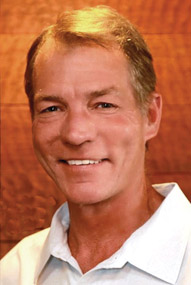 Ted DeGolia, DDS, has been practicing dentistry in Santa Rosa since 1983. Perhaps the greatest changes during his career, he says, is that people are taking a greater interest in the way their smiles look and prevention is emphasized more today.
Ted DeGolia, DDS, has been practicing dentistry in Santa Rosa since 1983. Perhaps the greatest changes during his career, he says, is that people are taking a greater interest in the way their smiles look and prevention is emphasized more today.As people are developing better oral hygiene routines, there’s been a great reduction in cavities in both adults and children, he says. There’s been a reduced intake of foods that cause cavities such as soft drinks (which contain a damaging combination of phosphoric acid and sugar), more frequent checkups and improved home hygiene. “Better education, nutrition, home hygiene and increased frequency of dental visits have greatly reduced the number of extractions and extent of periodontal surgery,” says DeGolia.
In addition, tooth whitening is now easier, there have been improvements in restorative materials such as metal-free fillings and crowns. Implant dentistry has greatly reduced the number of dentures and bridges. There’s also been an increased involvement by dental providers in health issues not directly related to teeth. Some examples include discussing prevention strategies and diagnosing oral cancer, and helping patients with sleep problems such as snoring. The face of dental care is also changing as dental providers are specializing in various areas such as pedodontists (children), periodontists (gums) and more.
What can we expect in the decades to come? “Dental disease is microbrial [bug] based, so with an increased understanding of the microbes involved and the way to control them, we should see a continued reduction in dental problems,” says DeGolia. “Implant dentistry will continue to improve. I expect—and would love to see—the further development of regeneration procedures. There’s the possibility that, in the next half century, we’ll see the regrowth of gums, bone and tooth structure. We may even see the entire regrowth of a new tooth.”
20+ years of service
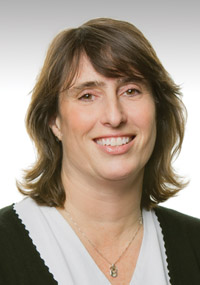 Elizabeth Culhane, M.D., is a pediatrician with Annadel Medical Group in Santa Rosa. About 20 years ago, pediatricians routinely made hospital visits, the Varicella (chicken pox) vaccine was still new, and parents were concerned whether the MMR vaccine (for measles, mumps and rubella) caused autism due to a since-debunked medical study that made headlines. What’s more, childhood obesity was not a major concern among doctors.
Elizabeth Culhane, M.D., is a pediatrician with Annadel Medical Group in Santa Rosa. About 20 years ago, pediatricians routinely made hospital visits, the Varicella (chicken pox) vaccine was still new, and parents were concerned whether the MMR vaccine (for measles, mumps and rubella) caused autism due to a since-debunked medical study that made headlines. What’s more, childhood obesity was not a major concern among doctors.Since then, two notable changes in pediatric care have taken place. First, care has become more focused in the office as well as the hospital settings. “Generally, I don’t go to the hospital very often [for inpatient care] or ER emergencies,” says Culhane. Instead, care is becoming more specialized as physicians focus on either inpatient or outpatient care. It allows for better patient care in those settings and a better lifestyle for physicians, she adds. For example, at SRMH, Culhane’s colleagues who practice as pediatric hospitalists treat patients who require hospitalization and are onsite to support their young patients 24/7.
Second, today’s pediatricians spend much of their time today providing “anticipatory guidance” by advising parents and children on ways to prevent accidents and injuries by using car seats and bike helmets, baby-proofing their homes and locking up firearms.
As for prevention of disease, whether or not to vaccinate is a major concern among parents today. “We’re pro-vaccine,” says Culhane. The MMR vaccine, which was linked to autism in a medical report, is safe; the study was found to be fraudulent in 2010. Nevertheless, Culhane still fields questions about the MMR vaccine, and the chicken pox vaccine is now required for kindergarten entrance in California.
Childhood obesity, though always on the radar for pediatricians, has jumped to the foreground in recent years. Today, preventing childhood obesity is among the most widespread concerns of health experts, including pediatricians and St. Joseph Health Promotores de Salud, who work at the grassroots to combat obesity among school age children. “We follow a child’s height and weight at every visit. If the BMI is approaching or higher than the 85th percentile, that’s our red flag to start intervening before it becomes more of a problem. We encourage parents to provide healthy [food] choices, and recommend one hour of activity at least five or six times per week,” she says.
What can we expect in the years ahead? A more integrated delivery system, says Culhane, which would involve an array of services all interconnected with electronic medical records (EMR), which includes accessing records to all services, such as inpatient and outpatient care, X-ray services, lab services, specialty care and more, which lets providers communicate with each other to provide more efficient care.
According to Victoria Morgese, M.D., a pediatrician in Napa, the relationship between pediatricians and parents has changed significantly—and for the better—in the last two decades. “Today, the parent and pediatrician are partners. We as pediatricians don’t dictate care. Rather, we provide evaluation and information so we can make informed decisions together,” she says.
As for prevention and wellness, pediatrics has always been focused on keeping children healthy and well, she says. “Today, there are renewed efforts to educate the public, especially in the North Bay, on the importance of vaccines and disease prevention. This is because many parents are choosing to forgo vaccination of their children. We’ve seen a resurgence in measles and whooping cough in recent years, and it’s concerning to see diseases that were virtually nonexistent in the United States 10 years ago.”
In the future, Morgese expects to see more use of EMR, patient portals and new ways to connect and exchange information. She also anticipates a continued emphasis on childhood obesity. “I hope to see even more partnerships between health providers, public health, schools and parents, working together to combat this very serious health crisis.”
Did You Know?
Out of 17 high-income countries studied by the National Institutes of Health in 2013, the United States had the highest or near-highest prevalence of heart and lung disease, infant mortality, adolescent pregnancies, injuries and more, according to an online search. Together, such issues place the United States at the bottom of the list for life expectancy.
Why is this happening? “The biggest reason is societal,” says Joel Sklar, M.D., chief medical officer at Marin General Hospital. “We have the best technology and the best care.”
However, no amount of medical care can eradicate the significant problems Americans face as a result of drug additions, guns, homelessness and nutritional problems, which can cause Americans to be overfed but malnourished, he says.
Author
-

Karen Hart is the editor of NorthBay biz magazine, keeping her finger on the pulse of the North Bay, directing content and leading day-to-day operations of the editorial team. An award-winning writer, Karen brings more than 30 years of experience to the position. She is a member of the California Writers Club, and serves on the Journalism Advisory Council at Santa Rosa Junior College. She moved to Sonoma County in 2000, and she’s here to stay.
View all posts



